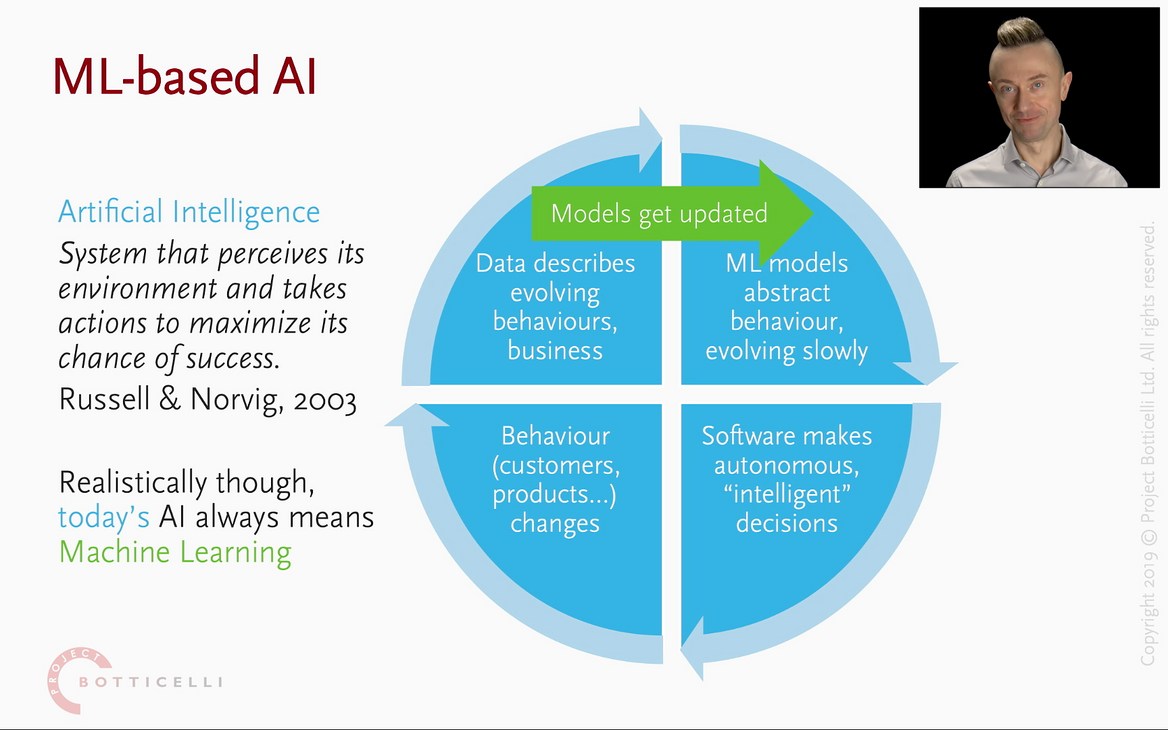Artificial Intelligence (AI) is not new. The term was first used, publicly, in 1956 at a Dartmouth Workshop conference, by John McCarthy, who is widely considered one of the fathers of AI. He defined it as “The science and engineering of making intelligent machines” and listed some of its aims as being able to “make machines use language, form abstractions and concepts, solve kind of problems now reserved for humans, and improve themselves.”. It is that final part of improve themselves that is at the heart of AI. Russel & Norvig develop this idea into their definition of AI, which is now in broad use: “System that perceives its environment and takes actions to maximize its chance of success,” in their Artificial Intelligence: A Modern Approach.
I have studied AI in 1990’s under Frank McCabe, who worked on the Prolog language (Micro Prolog to be precise), one of the key AI-focused programming languages of its era, and Bob Kowalski, who helped formalise logic programming at Imperial College, University of London. I find both of those definitions of AI very close to my understanding of it. However, I bet that many people think that AI is quite different—consumers equate AI with something much less complex, even if still very important: input processing. Input, here, means voice, sound, and image recognition and analysis. These are aspects of AI, but I do not think this is all there is to AI—a very small part of it, at best.
Recognition is most easily implemented using deep learning at present, which is, in itself, a form of machine learning. The remaining, much wider, forms of AI, those that focus on reasoning and judgement, are also being implemented using machine learning at the moment. I explain this in more detail in this free video.
Unfortunately, confusing the different aspects of AI, and expecting all of it to work well on the basis of deep learned models leads us to some major issues, misjudged expectations, poor, even dangerous designs. I strongly believe that while deep learning and machine learning are appropriate for some types of recognition-focused AI, the rest needs something else, otherwise we will build artificial stupidity rather than intelligence. Watch my next video in this series (also free) to find out about those risks.




